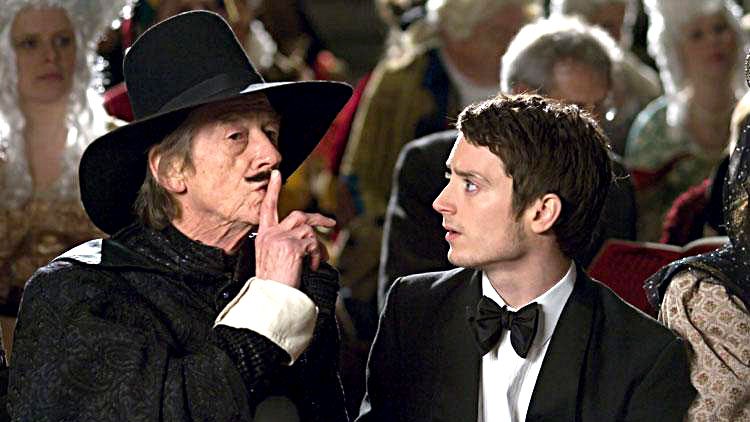
John Hurt and Elijah Wood in ‘The Oxford Murders’ (2008)
Synopsis
If you’re a math geek, The Oxford Murders might not add up for you. Ironically, it might be the folks who know just enough to be intrigued, but not enough to be completely impressed, for whom this equals entertainment, if not enlightenment.
Martin (Elijah Wood) arrives in Oxford from the States, hoping to snag the famous Arthur Seldom (John Hurt) as his advisor. (Right away, you get an idea of how cleverly the plot is constructed; consider the professor’s name against his reputation as someone who is coasting on the glory of a long-ago treatise.) Martin is completely humiliated in his first classroom encounter with the famous lecturer, but his determination to immediately abandon his academic career is cut short when a coincidence that defies mathematical odds puts him and Seldom together at the scene of a murder where, stretching the plausibility of the plot even more, the killer has left behind a clue.
Now who leaves clues? Serial killers of course. Martin and Seldom make an unlikely duo as a string of coincidences keep them together on the track of the killer.
Skip It
Through a leap of faith, more so than of logic, this mismatched Holmes and Watson decide that the killer’s trail of symbolic clues is hinting at the next victim. If they can decipher what the clues are saying, they might prevent the next murder. The search for meaning in the clues provides a convenient context in which Martin, Seldom, and the occasional crazy student hanger-on can discuss Phythagoras, Wittgenstein, Heisenberg, Gödel, and Bormat. (Who? Obviously Fermat, with no obvious reason for the name change. Sorry, but I couldn’t help hearing “Borat” instead.)
Unfortunately, anyone paying attention to where the camera lingers during certain scenes will figure out who the bad guy is long before our two geniuses do. In an attempt to deliver a climax with a crescendo, the “reveal” is inter-cut with a lecture in which the proof to Borat’s Last Theorem, I mean Fermat’s Last Theorem, I mean Bormat’s Last Theorem, is chalked out on a blackboard. It vaguely reminded me of that scene in The Godfather, where the screeching of the elevated train reflects the tension Michael Corleone feels as he’s preparing to murder Sollozzo. Except without the tension and without the satisfaction of understanding what just happened.
Perhaps the mathematical and philosophical references can provide grad students with enough fodder for a good 10-page dissection of how the unfathomable coincidences in the plot (Martin’s girlfriend, for example, turns out to have also had a relationship with Seldom) reflect the randomness of life. But I suspect they are just good enough to entertain the mathematically inclined, but inject just enough artistic license to put off the genuine aficionado. If you’re uncertain who Heisenberg is, you’ll get nothing from observing this movie.